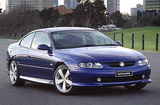Bosch system provides increased protection for pedestrians and cyclists
-Reliable detection for triggering protective functions
-First passenger cars equipped with EPP in series production
-Important contribution to EU ‘eSafety’ program
Statistics show that the risk of being killed in road traffic accidents is especially high for pedestrians and cyclists. Bosch now offers a safe and cost-effective solution with Electronic Pedestrian Protection (EPP) – an electronically controlled system for active impact protection for pedestrians and cyclists.
The EPP system consists of acceleration sensors fitted to the front of the vehicle and a control unit used to trigger actuators that raise the vehicle’s bonnet within a fraction of a second. This offers the impacting body a more efficient deformation zone and reduces the risk of injury.
Commenting on the technology, Bernd Hergert, head of the Occupant Safety Business Unit at Bosch explained: “A significant achievement of Bosch EPP is the development of a system that is able to reliably detect, analyse and identify the impact of a human body and, where appropriate, activate the protective devices. Two vehicle models with the Bosch EPP system are now in series production and additional applications will follow soon.”
Further developments, including the use of airbags, are also being considered as added measures for use in impact protection. Vehicle manufacturers can provide active impact protection with an independent control unit, or it can be integrated into the airbag control unit already present in the vehicle.
Important contribution to EU ‘eSafety’ program
The level of pedestrian traffic deaths in 2005 was alarmingly high at 25 per cent across the European Union, and it peaked at 45 per cent in countries such as Japan and Korea. While there are only limited ways for pedestrians and cyclists to protect themselves against injuries, the task falls to the automotive industry to equip vehicles accordingly. The objective is to enable the front of the vehicle to absorb the majority of the forces from an impact in order to minimise injuries.
A corresponding European Commission directive was introduced in 2005 and will be expanded as the European Union ‘eSafety’ program is aiming to cut traffic deaths in the EU by 2010. The Euro-NCAP crash test is also characterised by effective techniques for protecting pedestrians and legislators in Japan and Korea are reacting with similar measures.











